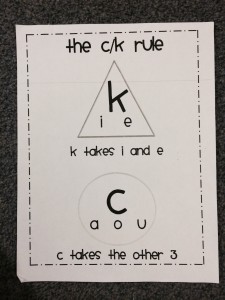What comes to your mind when you see a “handicapped sign”? What beliefs or images do you attach to the word “disabled”?

Until recently, I have never given much attention to the International Symbol of Access. Although I pass this symbol every day, I have never critically analyzed the potential message the ‘passive handicapped’ stick-figure pictogram portrays. Why I have not really looked at this image before- I don’t know, but regardless of my reasoning, I am now compelled to think about this image wherever I go. Believing that image is a powerful tool of communication, I want to analyze the message the current International Symbol of Access is sending to people with disabilities and to society. The stagnant figure constrained to the restraints of the wheelchair seems to represent, at best, an archaic conception of people with disabilities.
I recently presented a paper about the International Symbol of Access at a conference where I asked people from the University of Tennessee to shout out words they would use to describe the current “Handicapped Symbol”. When the picture flashed on the screen, words such as helplessness, immobile, static, lifeless,“cap-in-hand” dependence, constrained, and passive were terms used to describe the image and the message they felt the symbol was sending. These words, in my mind, were everything less than an ideal representation of how I wanted society to think about people with disabilities. The current symbol seemed to reinforce and deepen these less-than-ideal misconceptions and possible prejudices we as a society were trying to escape from.
I am saddened when we allow our perceptions of “disability” to cloud the true identity of one with a disability. We must be careful to not slip into this mode of thinking, for I believe it is usually an unconscious stream of thought, not a deliberate separation, which leads to an “us” verse “them” mentality. While most people may not consciously believe in the prejudice and discrimination that exists toward the disabled populations, much work still needs to be done to improve the overarching perception of the concepts of “disabled” and “disability” held by society. The current stigma that people with physical disabilities are sedate and somewhat helpless could start to be lifted by a new symbol representing more ideal traits of the disabled population. The Accessible Icon Project, promoting the “active accessibility” icon, chooses to do just that.
The Accessible Icon Project, a project trying to change the International Symbol of Access to the “active accessibility” symbol, is part of a general attempt to bring about a public re-conception of what it means to be “disabled”.

With the hands and the body posture moving forward, the person sitting in the wheelchair seems determined, confident, and not constrained in his/her ability to move forward. Describing the new image with words such as: active, abled, engaged, ready-for-action, determined and motivated, the new image can be viewed as a symbol of hope and freedom since it provides a new representation and identity of the disabled population. The “active accessibility” symbol should help reshape how society thinks about people with disabilities, as well as give people with disabilities a new perception of who they are as active and engaged members in society. In return, The Accessible Icon Project trusts this provides hope for people with disabilities to move forward and be a contributing force in our society. With the ability for image to influence perception, it is necessary to have an image that accurately portrays people with disabilities as active and engaged.
To learn more about the Accessible Icon Project please follow us @accessiconpro, become a fan on facebook at www.facebook.com/accessibleicon, and visit our website at www.accessibleicon.org.
“To us, the symbol might just be a symbol, but to those with physical disabilities, the evolved icon can be seen as a symbol of hope and a new identity”.






